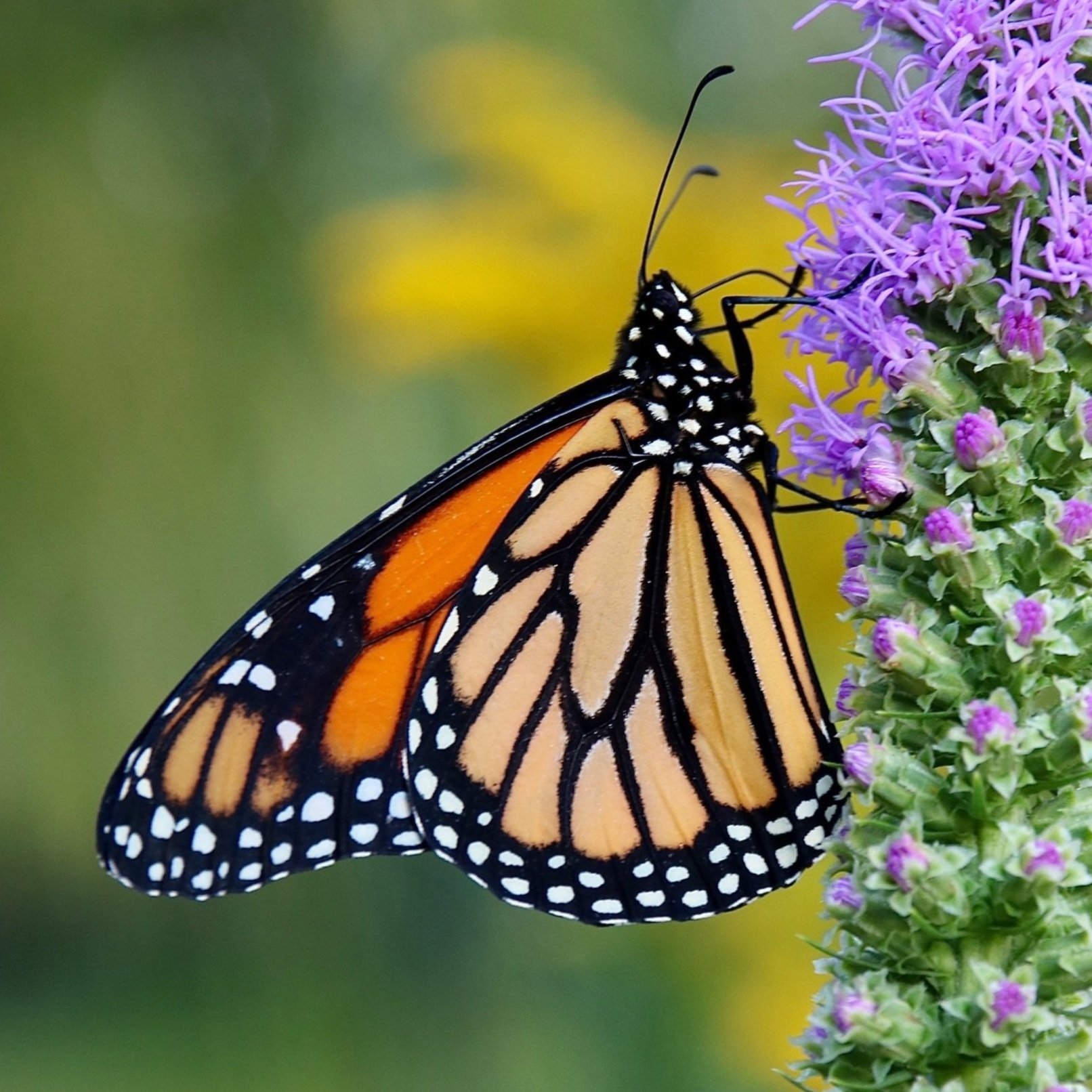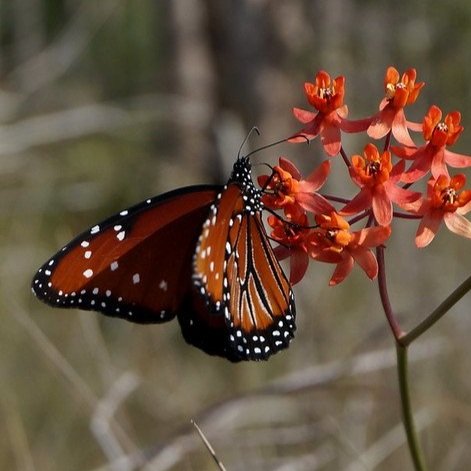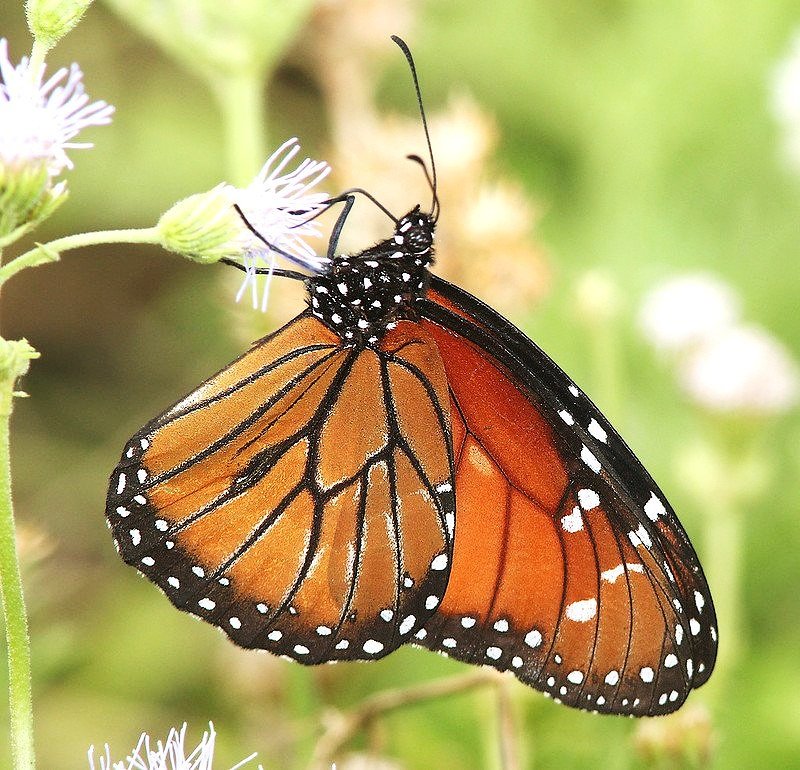Plant Description
Balloon Milkweed (Gomphocarpus physocarpus), also known by other names such as "Hairy Balls Milkweed" and "Family Jewels Milkweed" is such a fun addition to your butterfly garden. The unique seed pods really stand out, and florists have started to use stems as an eccentric "thriller" in bouquets. The leaf-shape and overall growth structure is reminiscent of a young willow but with white flower umbels dangling from the stems. Endemic to southeast Africa, this fast-growing milkweed is an excellent host plant for several Danaus butterfly species including Monarchs (Danaus plexippus), Queens (Danaus gilippus), and Soldiers (Danaus eresimus). In most of the United States, it is planted as a tropical annual but can be a perennial in warmer zones.
Out of all the milkweeds we have planted at the farm, Danaus butterflies--most notably the Monarch--seem to love this species the most. The leaves on this fast-growing plant stay tender throughout the season, when other milkweeds are past their prime.
People refer to this plant by many names, which can lead to confusion. It was once named Asclepias physocarpa, but in 2001 it was renamed Gomphocarpus physocarpus to show that it belongs to the family of African Milkweeds.
Balloon Milkweed is native to South Africa, Swaziland and Mozambique but has naturalized in areas around the world such as Africa, the Mediterranean, China, India, Mexico, Central America, and tropical South America.
Growing Info
HARDINESS ZONES | 8 - 10
MATURE HEIGHT | 4-6ft
SPREAD | 2-3ft
SUN | Full sun
SOIL | Light to medium, moist well-draining soil
WATER | Dry to Medium
LARVAL HOST | Monarchs (Danaus plexippus); Queens (Danaus gilippus); Soldiers (Danaus eresimus)
Important Notes
In warmer zones such as Zone 8-10, Gomphocarpus physocarpus has a high risk of escaping cultivation.
It produces hundreds of seeds which can be easily distributed by the wind, allowing for it to invade and colonize native habitats. For this reason, we recommend planting other milkweeds in southern zones, unless you are willing to remove seed pods before they open.
A higher prevalence of butterfly diseases in southern zones where Gomphocarpus physocarpus is a perennial means more plant maintenance is required.
These warmer zones often have resident populations of Danaus butterflies that do not migrate. As a result, diseases such as the debilitating protozoan parasite OE remain present year-round. Native milkweed species that die back to the ground when entering dormancy effectively remove any OE spores present. However, because of this plant's evergreen nature in warmer zones, diseases such as OE remain present on milkweed leaves, continuing the cycle of weakened & diseased butterflies. To reduce disease transmission rates, we recommend cutting your plant back to around 6" multiple times during the fall and winter months.
Butterflies
Monarch Butterfly (Danaus plexippus)
Queen Butterfly (Danaus gilippus)
Soldier Butterfly (Danaus eresimus)
Common milkweed is a host to the following North American butterflies. Look at our Common Kansas Native Butterflies page for more information!
CREDITS: Image 2: "File:Balloon Cottonbush (Gomphocarpus physocarpus) fruit (32131234672).jpg" by Bernard DUPONT from FRANCE is licensed under CC BY-SA 2.0, Cropped and Sharpened
Image 3: "20150905_4891 Gomphocarpus physocarpus" by chipmunk_1 is licensed under CC BY 2.0, Cropped and Sharpened
Image 5: "Asclepias physocarpa (Balloon plant)" by Forest and Kim Starr is licensed under CC BY 3.0, Cropped, Sharpened, Text Overlay





















